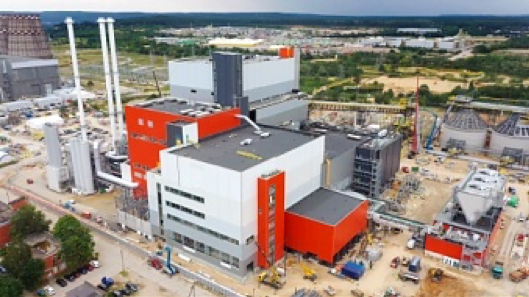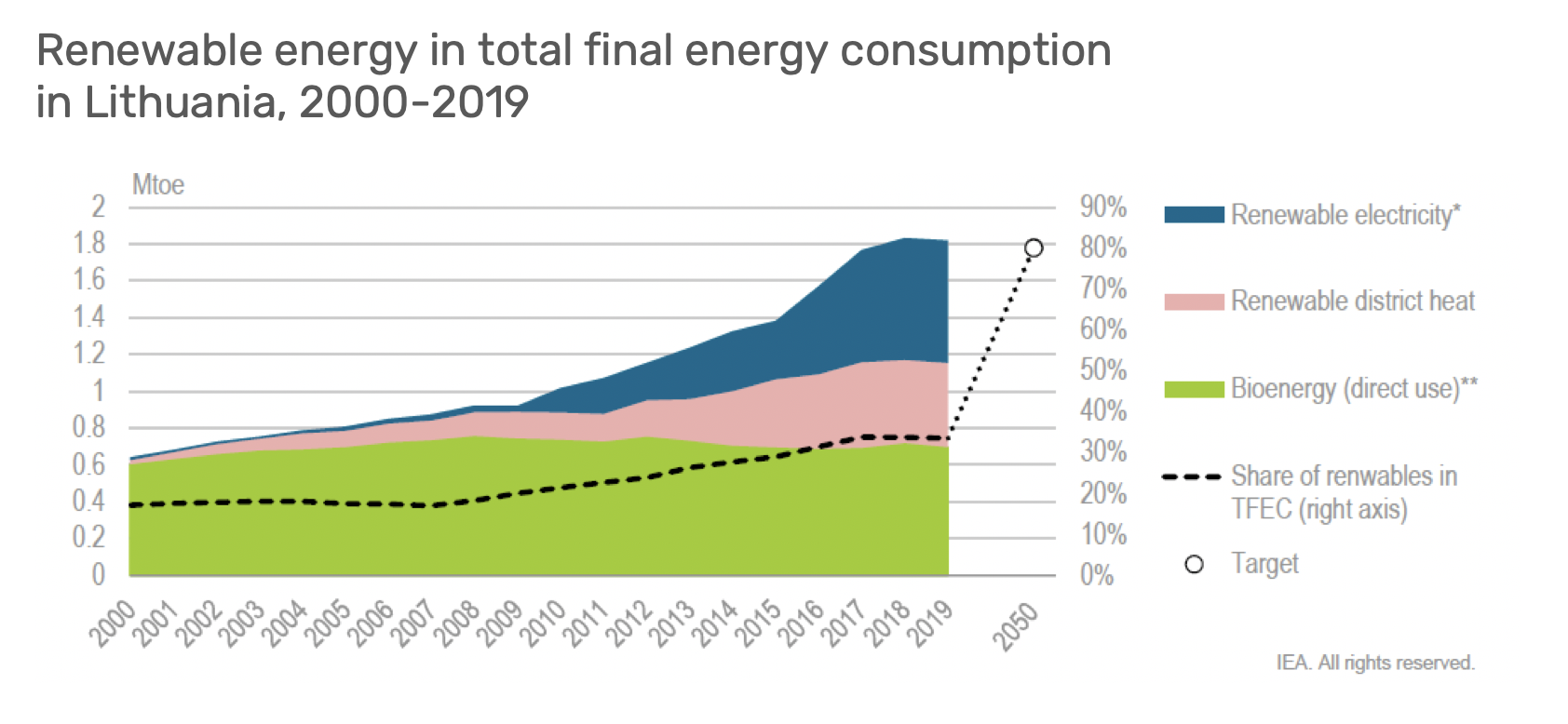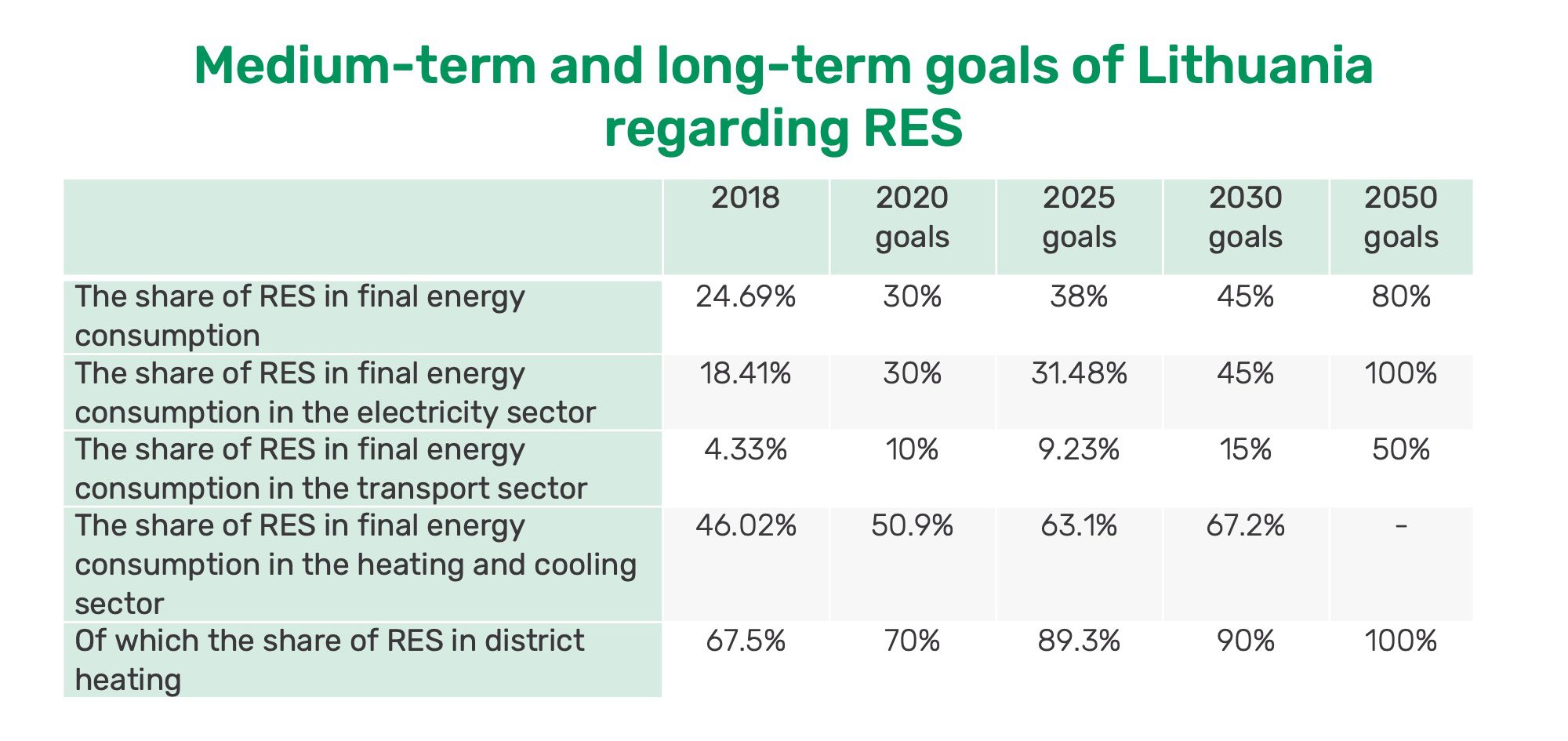RES Development: Lithuania

In short, bioenergy continues to be actively developed in district heating (DH), and wind energy is growing rapidly in the production of renewable electricity.
Facts
Renewable heat supply has more than tripled — from 144 thousand tons of oil equivalent in 2009 to 456 thousand tons of oil equivalent in 2019.
Renewable energy sources grew even faster — from 34 thousand tons of oil equivalent in 2009 to 664 thousand tons of oil equivalent in 2019.
Lithuania has already achieved the objectives of the EU RES Directive. Lithuania’s national target for RES for 2020 was 23%, which was achieved in 2015 with a share of 25.75%.

Share of RES by sectors in the gross final energy consumption of Lithuania (2019): 75.8% of electricity, 53.9% of heating, 3.7% of transport.
In 2019, the production of electricity from RES in Lithuania amounted to 2.5 TWh, or 75.8%, in particular: wind — 44.5%, bioenergy and waste — 18.4%, hydropower — 10.2%, solar energy — 2.7%.
Read in our previous materials:

More information: Lithuania 2021, Energy Policy Review, INTERNATIONAL ENERGY AGENCY


